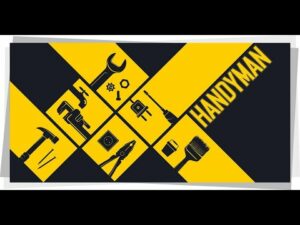
The entire Internet is based on links. A successful link profile is an essential condition for valid website promotion. Let’s look at its the most distinguishing features.
What does a good link profile look like?
Backlinks are the most crucial element of search engine optimization. In the case of their absence, the search ranking drops instantly.
However, backlinks are just one component out of the others. Let’s look at a few other points that affect the web page profile and discuss the features that characterize a successful profile.
The branded text part
If to analyze the priority of the various elements that affect the ranking of the site, it will look like this:
- The most critical factor in a site’s ranking is its profile.
- The most important aspect of a profile is the quality of backlinks.
- The most important aspect of link quality is the text.
- The most important quality of anchor text is diversity.
A company text is a text that includes the name of the brand. For example, if your firm is called “The Best Electronics in the World,” then this will be the corporate text of the link that will lead to your web page.
Semantically relevant anchor text
Another type of diverse text is a semantically relevant one. Have you heard about semantically related search keywords? For example, if the request did not contain your keywords, Google may put your page in search results providing content of your web page is associated with the keywords specified in the offer.
If your profile contains anchors containing similar semantically relevant words, this helps to enrich and diversify the profile. For example, your request is “sports heart rate monitors,” semantically corresponding anchor will be “hours for playing sports.”
An article on the topic “Sports heart rate monitors for marathon training” may be published on the site. A health site using the link to this page involves the “sports hours” anchor. It can help improve the profile.
Combined anchor text
The corporate anchor text combined with other words or phrases is an essential feature of an appropriate profile. In this era, creating an optimized text is not very relevant. Much better is combined anchor text.
Using our fictional “Best Electronics in the World” as an example, let’s take a look at which keywords will refer to heart rate control devices, portable electronics, heart rate monitors, etc.
A useful text to your site will look like this: “Do you want to train with a heart rate monitor? Some companies can provide you with this opportunity. ” In this example, the whole sentence is anchor text. It does not contain keywords or even brand names. And this is okay. Its indirectness makes it a valuable component of the profile, provided that all other factors are also in order.
The relevance of sites links
This component is also known as local, thematic popularity. Currently, this is a standard part of almost all search engines. That is, backlinks to your site should lead to web pages with similar topics. They must be relevant.
For example, suppose you have a site related to weight loss techniques. You get a backlink from a company that specializes in slimming underwear. It will not bring much benefit to your profile. Much more useful would be a link from the site about proper nutrition for weight loss. Thus, it would be best if you had references from your own site’s field.
Up-to-date links
Over time, the power of links tends to decrease. If you have them from sites with a rating of 9 seven years ago, this will not be as useful for the site as links with a score of 8, but as for yesterday.
Thus, this phenomenon is called an up-to-date factor. It deals with the fact that the site’s content might become obsolete and lose its significance over time.
Mutual mentioning
Mutual mentioning is often used along with the term joint occurrence and is a simple mention of site A on site B, even without a real link or link between them. As a result of the remark, the significance of the first is transferred to the second.
Variety of linked pages
A decent profile displays many related pages. These will be linked to not only one or two pages, but also the main page, and the blog, contacts, “about us” and other sections of the site. The stronger the profile, the more comprehensive the prevalence and variety of linked pages.
Significance of the linking site
When your site receives a link from an authoritative site, its importance also grows significantly. To be effective, the link must not have the “no follow” HTML attribute. That is, such a link still has a specific value, but does not bear any benefit for the link profile.
When, for example, Google comes across a link to your page with this attribute, here is what happens – we do not follow these links. This means that Google does not pass PageRank or anchor text to these links. In fact, such an attribute forces us to leave targeted links. You can find out if it is marked with the attribute “nofollow” by opening the source code of the page and finding the tag “href”.
Quantity of links referring to a page
The more links a page receives, the better it is. A good profile contains many of them. However, receiving too many links from one site does not increase profile quality.
Google recognizes one link from one site in the same way as if there were a thousand. So, if you get a link from the site, it will be great. However, if there are twenty of them, it does not mean twenty times better.
Yes, it would be best if you had a lot of links. That is a fact. Nevertheless, they should be from different sites. A large number of them from one place will not harm your profile. It just will not help.
So, these are the significant aspects that influence developing a successful profile. Now, that you understand the benefits of a robust profile, you must know which strategies are best to use and which ones to bypass.
Marie Barnes is a Marketing Communication Manager at LinksManagement. She is an enthusiastic blogger interested in writing about technology, social media, work, travel, lifestyle, and current affairs.




